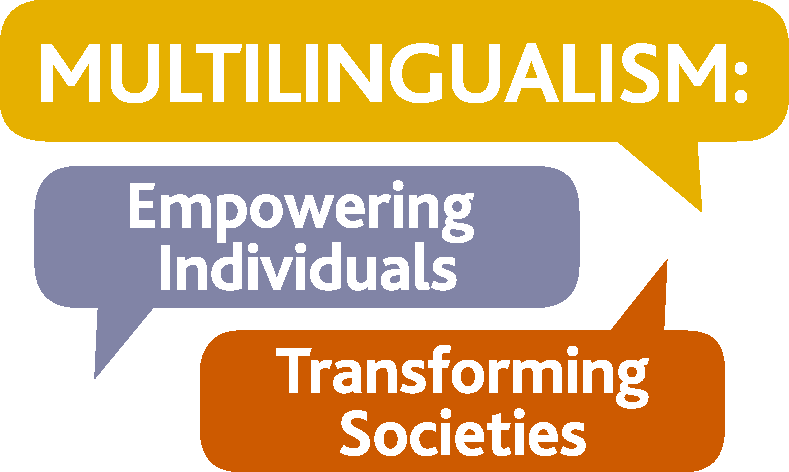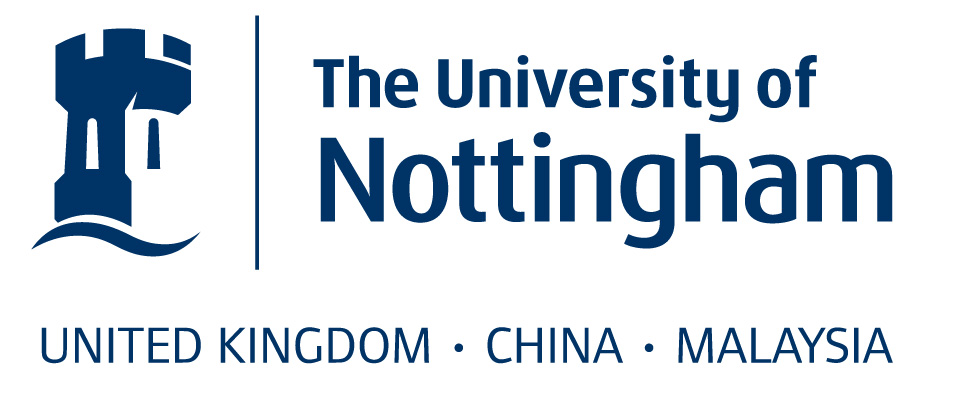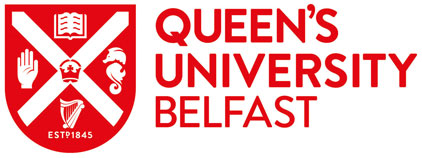- This paper draws on my experiences with language in English and non-English-speaking universities, minority language education research (Migge et al. 2010) and on a survey-based research project on linguistic diversity at a major Irish university (Lucek & Migge ms).
- Universities worldwide are under pressure to internationalise but there is a lack of clarity about what it means.
- Internationalisation is interpreted to mean exposure to diversity.
- Universities generally try to achieve internationalisation by encouraging students to spend one or more semesters at a foreign institution and by hiring foreign staff.
- In terms of language, internationalisation is generally limited to discussions about access to English and the role of English.
- Local academic staff and students are traditionally not seen as playing an integral role in internationalisation when at home.
- Recommendation: a socially sustainable approach to internationalisation requires a bottom up approach: it must involve raising awareness about local and global diversity & its multifaceted origins through the core curriculum.
- Recommendation: language is a central ‘tool’ for raising awareness about diversity and experiencing diversity.
Internationalization, Diversity and the Modern University
Universities around the world are under pressure to internationalise. However, its conceptualisation and what it entails has remained nebulous at best. It is often equated with an equally nebulous concept: diversity. Many universities are investing in attracting foreign faculty and students and in encouraging local students to spend one or more semesters abroad and staff to engage in research projects with colleagues from universities outside of the national territory. Within the European Union, this approach is politically and financially supported by programmes such as Erasmus+ mobility funding and different Horizon funding schemes for supporting collaborative research within Europe and beyond. These measures have ignited a transformative agenda whose aim is to raise awareness and foster engagement with diversity. However, lasting social change that has diversity at the centre of all activities requires much more fundamental institutional change beyond promotion of physical mobility.
The recommendation is that awareness about diversity, a key element of internationalisation, should be promoted through educational curricula. This should centrally involve discussions about the nature and origins of social diversities cross-culturally and regimes of inequality and subordination that are the intractably linked to diversity. All staff and students are agents in the process of internationalisation as it is a larger social process whose aim is to critically evaluate existing norms, practices and value systems in the local context and internationally. This process must be responsive to the social and educational realities of each university. Universities have to critically examine their own resources – staff, students, curricula, services, local and national environment – and how they can be utilised to promote a globally-oriented, decolonial education for all. Strategic management is required to ensure that awareness of diversity is fully embedded in all educational programmes and consistently enhanced through formal and informal university curricula.
Internationalisation, Language and the Modern University
For many universities, especially in continental Europe, a cornerstone of internationalisation is the introduction of English Medium Instruction (EMI), in parallel to instruction in the national language, or as the only medium of instruction. Academic discussions have thus largely focused on the position of English, and how it affects university language ecologies. On the one hand, English is seen as a tool for international outreach (student recruitment) and for enabling diversity for locals. On the other hand, it is perceived as a threat to the viability of national languages in higher education, to the integration of minority languages (e.g. Basque in France, African languages in South Africa) into education and to foreign language learning too (e.g. Hungarian or Dutch). There are also concerns about access to and English language competence among staff and students and its impact on student access to education.
English Medium Universities, Internationalisation and Language
English-medium universities in (predominantly) English-speaking countries have not much figured in debates about language and internationalisation. An immersion-type model where foreign students are expected to function like locals is the norm. Apart from a short intensive training period in academic English for students who did not complete their secondary education through English, there are few supports, putting the ‘burden’ of ‘adjustment’ on the (foreign) student. Recently, concern about low intercultural competences among English-speaking students has prompted universities to attempt to increase international staff and encourage (local) students to spend time abroad. However, foreign staff at English-speaking universities are under pressure to assimilate to the language and cultural norms of English-speaking universities to meet students’ needs and English-speaking students are shielded from foreign cultures through EMI programmes when abroad. Two assumptions govern this: English-mediated knowledge is superior or optimal and intensive exposure to foreign cultures creates culture shock which endangers students’ mental health. To enhance the comparatively low levels of intercultural competences among many staff and students, English-speaking universities have started to offer intercultural awareness training. The integral role of language in interculturality does not, however, receive systematic attention and is, in fact, often outright denied. Concerns of inclusiveness are also put forward to prevent greater use of other languages for socialising and professional work. This creates a power and experience/knowledge differential between staff and students from English and non-English-speaking universities.
Language and Social Meaning
Sociolinguistic research has abundantly documented the role of language and variation in language as a prime marker of social meaning. All aspects of language from sounds, words, including use of different languages, may do this social work. For example, the second person plural in Irish English can be expresses in various ways: you, youse, ye, yiz. They all mean the same thing but create different images of the speaker. Each is linked to a different set of (local) social meanings, e.g. middle class, more formal; working class, rough informal; rural; gentrified informal. Broadly speaking, it is the occurrence of a form and its frequency of use that indexes different social meanings. Applying this to university language practices, the near exclusive presence of English in all domains at a typical English-speaking university equates English and monolingualism to professionalism, high status and importance and associates other languages, ‘their’ cultures, and the use of two or more languages to the opposite values, effectively devaluing their use. This dynamic needs to be disrupted. Greater exposure to linguistic diversity, combined with critical discussions about the social dynamics of diversity and strategies for ‘dealing’ with it for people who lack competence with it, are likely to offer a fruitful insights into how diversity works.
Some recommendations
Taking a bottom-up approach to raising awareness about social diversity and the integral role of language is key. A first step is identifying the important social divisions in the country, region, city, university. Step two involves identifying and exploring salient language issues, e.g. linguistic stereotypes, and their linkages with existing social divisions. Step three deals with devising measures for raising awareness of these issues by focusing on citizenship in terms of a set of rights, duties and responsibilities and focussing on how language relates to societal divisions.
Citizenship will focus on mainstreaming awareness about social and linguistic diversity in all university curricula. Essentially, all modules must take account of diversity as appropriate to their area. Readings should come from a diverse range of people and reflect the locally salient social divisions (e.g. gender, ethnicity, age, sexuality) and identities. Module themes, topics and assessment strategies should balance subject or professional requirements with those relating to diversity and challenge students to look beyond their own social and cultural horizon. Modules must also take up locally controversial or neglected social issues to address one-sided narratives and perspectives about them. Finally, the diversity of people who work in a discipline – now and over time – and their contribution to it should be adequately highlighted.
In terms of language, an important measure is to extend language offerings to include not only those languages that are most widely spoken and have the highest prestige. Universities should offer courses on languages spoken in the local community both for learners and heritage speakers such as Polish and Lithuanian in Ireland, for example. The latter’s presence should also be made more visible through signage and overt discussions, e.g. the relevance of Polish in areas of the labour market. The relevance of languages and knowledge about them such as knowledge about the social diversity of a language and how this social diversity is actively used by institutions, employers and lay people to discriminate against people needs to be made explicit to students and staff. Moreover, students need to be made aware of the fact that while knowledge of one or more languages is important to get employment in many fields, it is also crucial for demonstrating cultural agility, such as being able to work and communicate effectively with people across different cultural spheres. Language learning is thus an important way to learn first-hand about diversity. Learning a language helps people to become familiar with new ways of seeing and experiencing the world. It forces learners to critically reflect on their own ways of behaving, including their own ways of communicating, and how meaning is constructed.
Language skills are also important to promote decolonial and non-essential approaches to cultures. When combined with content teaching, such as through the partial or full delivery of professional content in another language, language skills help students understand a culture on its own terms instead of being limited to a mediated version of it. This approach also raises awareness of the importance of culture in communicative processes and highlights the everyday transformative processes involved in trans- or cross-cultural communication. Such an approach could be achieved in cases where one or more languages are widely learned or in high demand by students and where regular or exchange staff are available to teach all or aspects of a module through that language. Such an approach could help change the power dynamics between English-speaking students and those that have another/that language as a home language, putting the former into the shoes of the latter. Finally, it can also create feelings of belonging for minority language speakers and address negative views among others. While this approach may initially lead to feelings of discomfort, it can accustom local students to living with (linguistic) heterogeneity and help to normalize it both consciously and from an experiential perspective.
In order to soften the possible shock and in contexts involving different languages, training initiatives could be run that discuss how to deal with linguistically and culturally heterogeneous situations. Training could focus on broader issues such as common principles, assumptions and pitfalls in cross-cultural communication, functions of translation and practical solutions to commonly occurring situations. For example, such courses could critically assess the different strategies that exist for delivering academic papers to multilingual audiences or for organizing communication in multilingual teams, including the reasons why certain strategies are traditionally more commonly selected than others. The intercultural skills acquired could then be practiced in research seminars. This should form part of curriculum design. While such training initiatives seem easily achievable and are likely to have a huge effect in terms of fostering understandings of diversity, I am not aware of any such provision.
It is crucial that activities and discussions are not just preoccupied with students who have socially and linguistically diverse backgrounds but particularly focus attention on largely monolingual people. Discovery of new perspectives and mutual support must be at the centre of this exercise. Where possible, a strong focus on accuracy or purity in language use should be avoided; alternating between languages in various ways during educational activities should be recognized as a creative and inclusive way to handle situations rather than being seen as substandard. It is important that measures involve all staff categories. Local lecturing staff of all categories, rather than foreign research students, should lead such activities and also actively participate in them. The more that experienced and established staff engage with such activities, the greater the likelihood that students will attach positive values to them, recognize the value of diversity and proactively engage with it too.
Further reading
Bucholtz, Mary and Kira Hall. 2010. ‘Locating identity in language’, in Language and Identities, ed. by Carmen Llamas and Dominic Watt (Edinburgh: Edinburgh University Press), pp. 18-28
Gimenez, Julio. 2020. ‘Edulingualism: linguistic repertoires, academic tasks and student agency in an English-dominant university’, International Journal of Multilingualism. DOI: 10.1080/14790718.2020.1815750
Knight, Jane. 2013. ‘The changing landscape of higher education internationalisation – For better or worse?’, Perspectives: Policy and Practice in Higher Education, 17.3: 84-90
Soler, Josep, Lídia Gallego-Balsà. 2019. The Sociolinguistics of Higher Education: Language Policy and Internationalisation in Catalonia (London: Palgrave-MacMillan) [particularly chapter 2]
Resources
Domínguez, Michael. 2019. ‘Decolonial innovation in teacher development: praxis beyond the colonial zero-point', Journal of Education for Teaching 45.1: 47-62
Marriott, Helen. 2013. ‘Multilingualism among university staff: a case study of language management at an Australian university’ Journal of Multilingualism 10.4: 454-468
Migge, Bettina, Isabelle Léglise and Angela Bartens. 2010. Creoles in education: An appraisal of current programs and projects (Amsterdam: John Benjamins)
Schrödler, Tobias. 2018. ‘Multilingualism in the governance of a “monolingual” institution: an explorative study on linguistic diversity and language practices in the University of Hamburg’, International Journal of Multilingualism. DOI: 10.1080/14790718.2018.1520237
Soler, Joseph. 2019. Language Policy and the internationalization of Universities: A focus on Estonian Higher Education (Berlin: Mouton de Gruyter)
Cite this article
Migge, Bettina. 2020. 'Why embed multilingualism into university practices?', Languages, Society and Policy. https://doi.org/10.17863/CAM.62272






